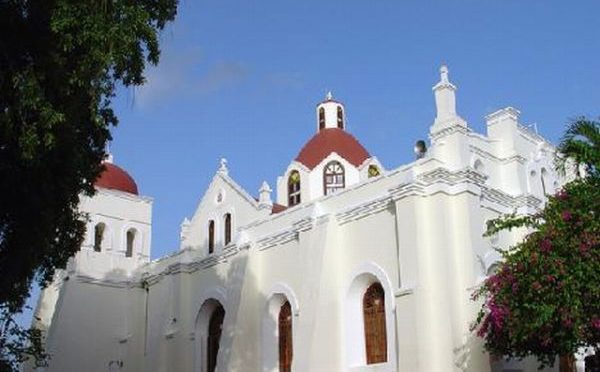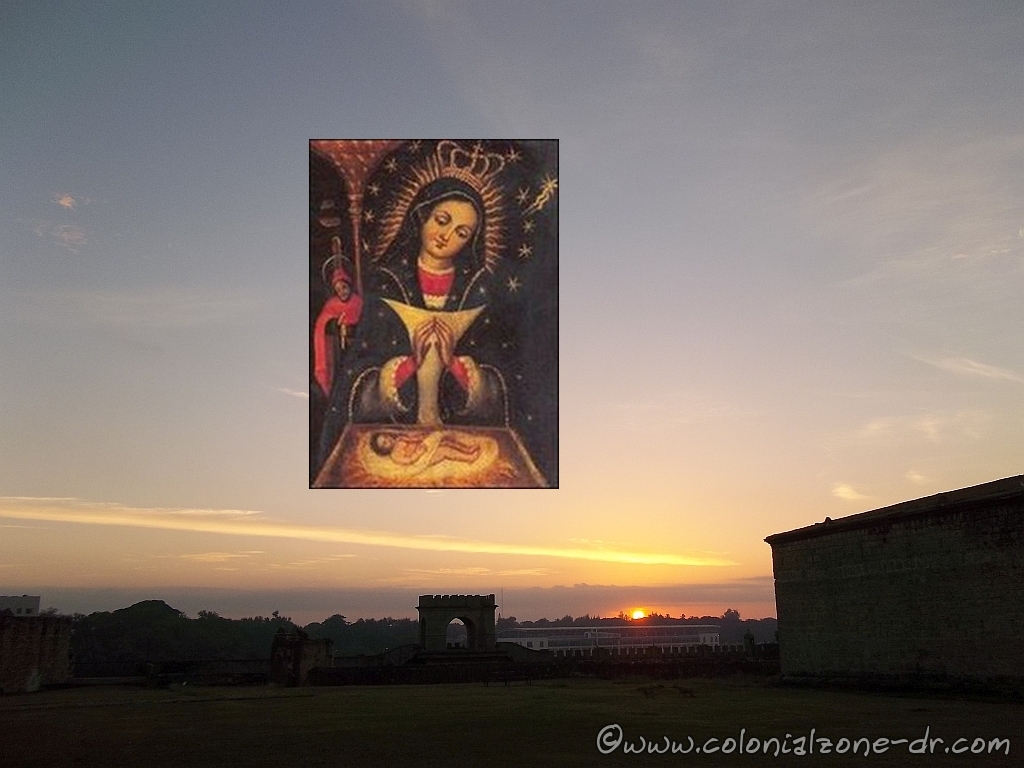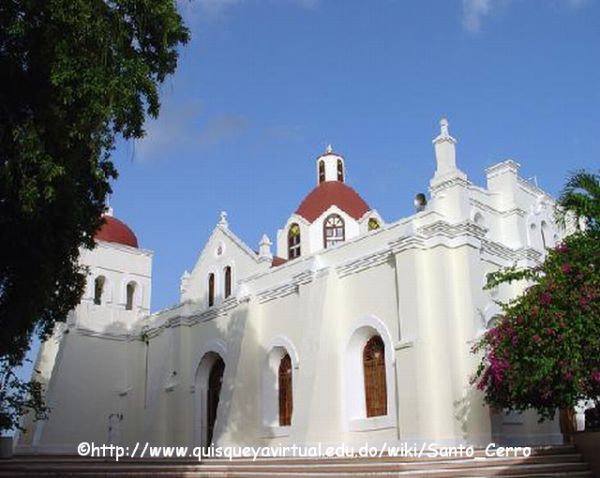Palacio Virreinal Alcázar de Colón / Columbus Royal Palace
The Palacio Virreinal Alcázar de Colón (Colón is the Spanish word for Columbus), the short name is Alcazar de Colon. In English it is known as The Columbus Palace. This beautiful historical monument and UNESCO World Heritage site is a 22 room stone home built by Christopher Columbus son, Don Diego Colón and his wife María de Toledo.
1. Alcázar de Colón 2. Museo Alcázar de Colón 3. Maria de Toledo Statue 4. Directions
Alcázar de Colón

Diego and Maria Toledo resided in this 50 room Viceregal palace, during Diego’s term as viceroy. It has beautiful gardens, large balconies and amazing courtyards. This fortress was built during the early 1500s to be the seat of the viceroy court.
Diego and his wife, Maria de Toledo, lived here until 1523 when he was recalled to Spain. Other relatives lived here for decades afterward.
This building was abandoned in 1770 and turned into a garbage dump. Cave-ins in 1809 and 1835 left the building in ruins.
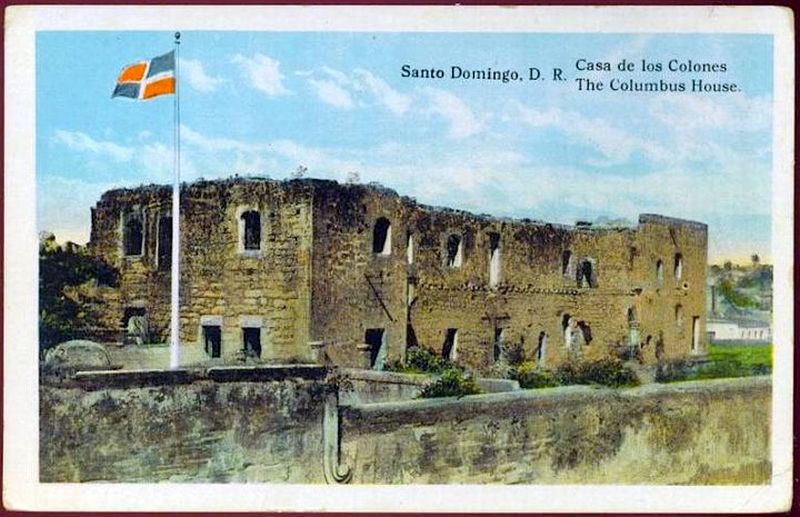
The building was restored by highly skilled stone cutters under the orders of President Trujillo. There were some added refinements made during several later restorations. The size is much smaller than the original building. All rebuilding was done to remain as faithful as possible to the original construction and decor. Not one single nail was used in its construction. It opened to the public on Columbus Day in 1957.

The palace sits in a large open square, Plaza de Armas or Plaza de España. There are always some interesting activities happening in this beautiful plaza and if there are no activities it is still a nice place to sit on one of the benches located around the edge of the plaza.
The Alcazar looks beautiful at night with the lights shining on the stone-coral building. The Palacio Virreinal is a must-see for those who want to learn about Santo Domingo’s historical beginnings.

Museum of the Royal Houses / Museo Alcazar de Colón

Located inside the Alcazar is a museum that is home to an extensive collection of furniture and household items from the colonial period all arranged to look as if it is being lived into this day.
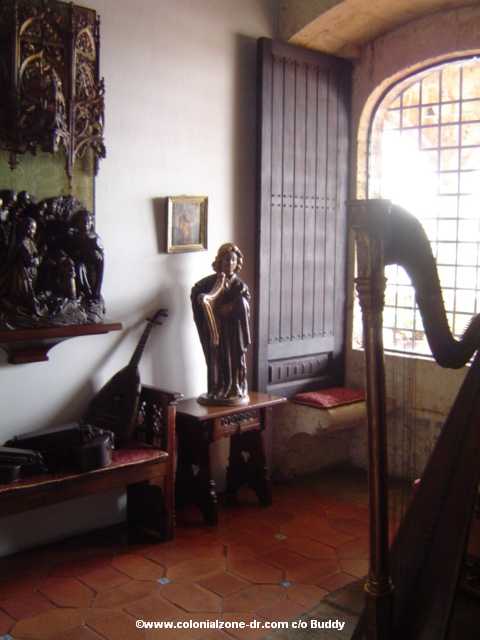
On display in the mansion is furniture, many clothing items and home utensils from the era, all supplied by the Spanish government. The furnishings are not the original household furnishings. Since the building was in ruins for many centuries it was ransacked and all the furnishings were taken or destroyed.
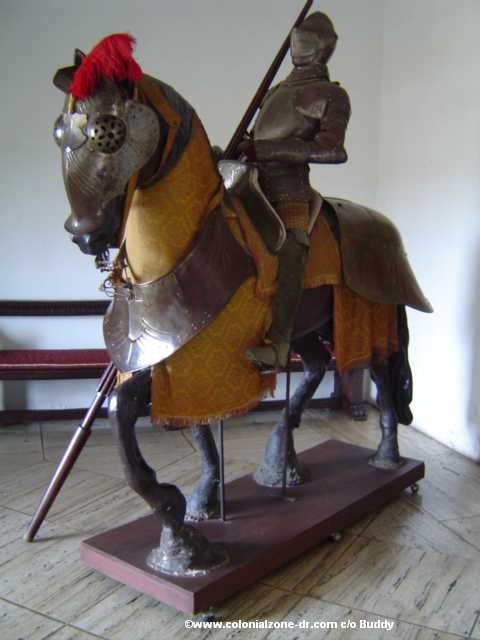
The museum is open to the public Tuesday to Saturday 9AM – 5PM and Sundays from 9AM to 4PM
General admission is RD$50 (6/2012)
Maria de Toledo Statue

*Note- Mid-2017 the statue was moved to the Plaza Maria de Toledo between Isabel la Católica and Calle las Damas.
In the side yard is a statue of Maria de Toledo, the niece of the King of Spain and wife of Diego Colón, the son of Christopher Colón.
Maria was the first person of noble lineage to come to the Spanish island in 1509. She was the great-niece of the Catholic Monarchs and granddaughter of the Duke of Alba).

María de Toledo was a gracious host and loved having parties and visitors to her home. The statue of her seems to be inviting guests to her home.

Directions
Calle Las Damas at Plaza España. Walking west on Calle el Conde go almost to the end at Calle Las Damas. Turn left and continue walking about 1 1/2 blocks straight ahead. The street will turn into a pedestrian only plaza. Keep walking and you will see the giant palace in the distance. You cannot miss it.


